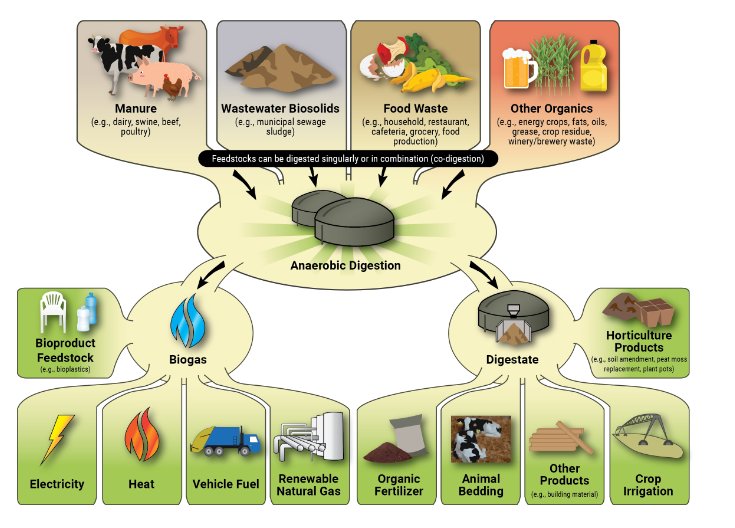Exploring the mysteries of anaerobic fermentation: new approaches to sustainable energy and waste utilization
Anaerobic digestion is the simple, natural breakdown of organic matter into carbon dioxide, methane and water, by two groups of microorganisms, bacteria and archaea. Since many of these are intolerant to oxygen, this process is known as anaerobic. At the end of the process we have a mixture of methane and carbon dioxide gases (biogas), water and some organic material (digestate). Biogas can be burned to produce both heat and electricity, while methane can be used as vehicle fuel or injected into the gas grid. Digestate is a stable, nutrient-rich substance and can be used for a range of products and purposes: most usefully as a fertiliser, rich in nutrients.

Anaerobic digestion is a series of biological processes in which microorganisms break down biodegradable material in the absence of oxygen. One of the end products is biogas, which is combusted to generate electricity and heat, or can be processed into renewable natural gas and transportation fuels.
A range of anaerobic digestion technologies are converting livestock manure, municipal wastewater solids, food waste, high strength industrial wastewater and residuals, fats, oils and grease (FOG), and various other organic waste streams into biogas, 24 hours a day, 7 days a week. Separated digested solids can be composted, utilized for dairy bedding, directly applied to cropland or converted into other products. Nutrients in the liquid stream are used in agriculture as fertilizer.

The digestion process begins with bacterial hydrolysis of the input materials in order to break down insoluble organic polymers such as carbohydrates and make them available for other bacteria. Acidogenic bacteria then convert the sugars and amino acids into carbon dioxide, hydrogen, ammonia, and organic acids. Acetogenic bacteria then convert these resulting organic acids into acetic acid, along with additional ammonia, hydrogen, and carbon dioxide. Finally, methanogens convert these products to methane and carbon dioxide.